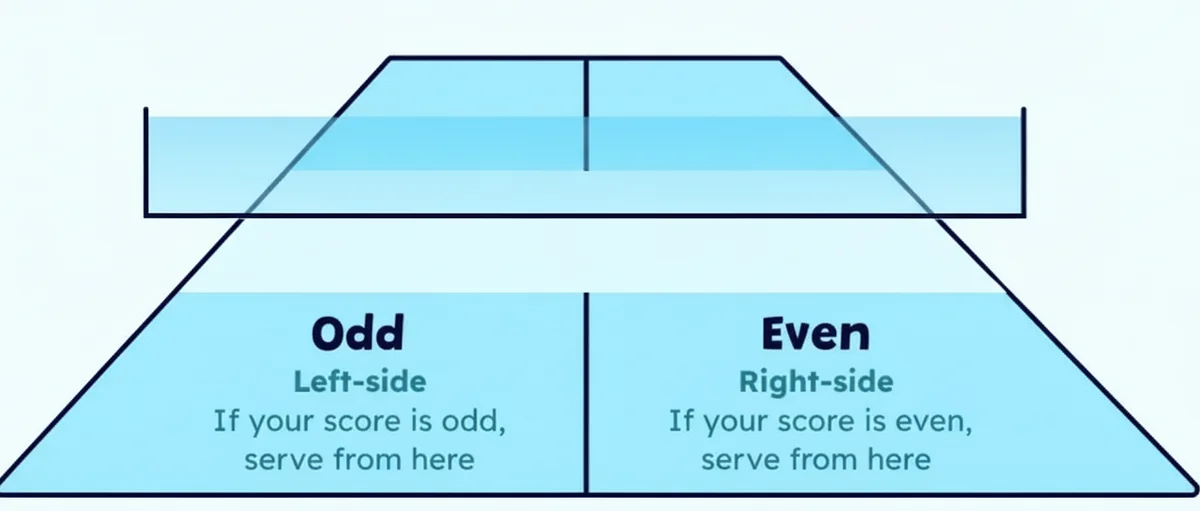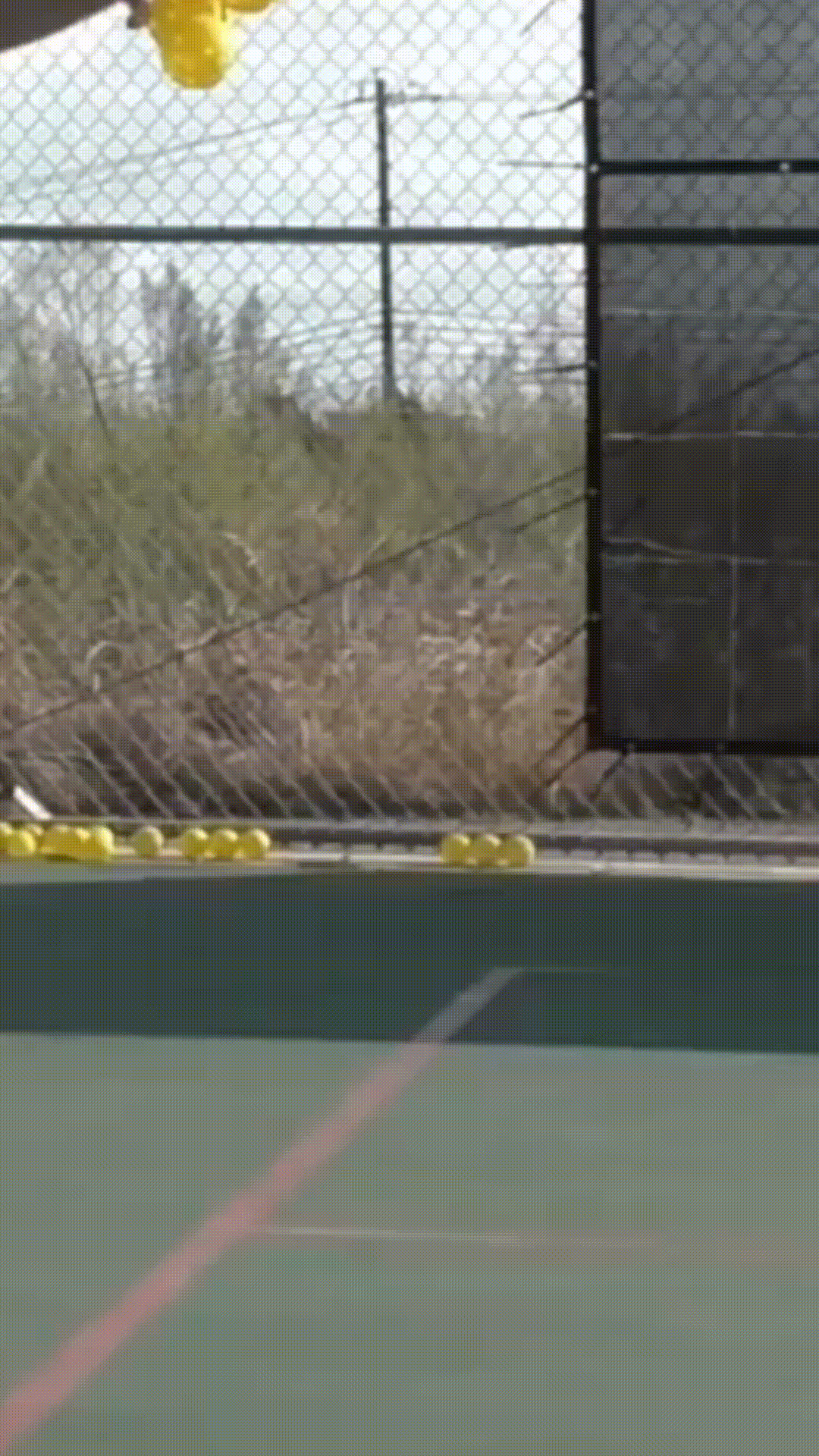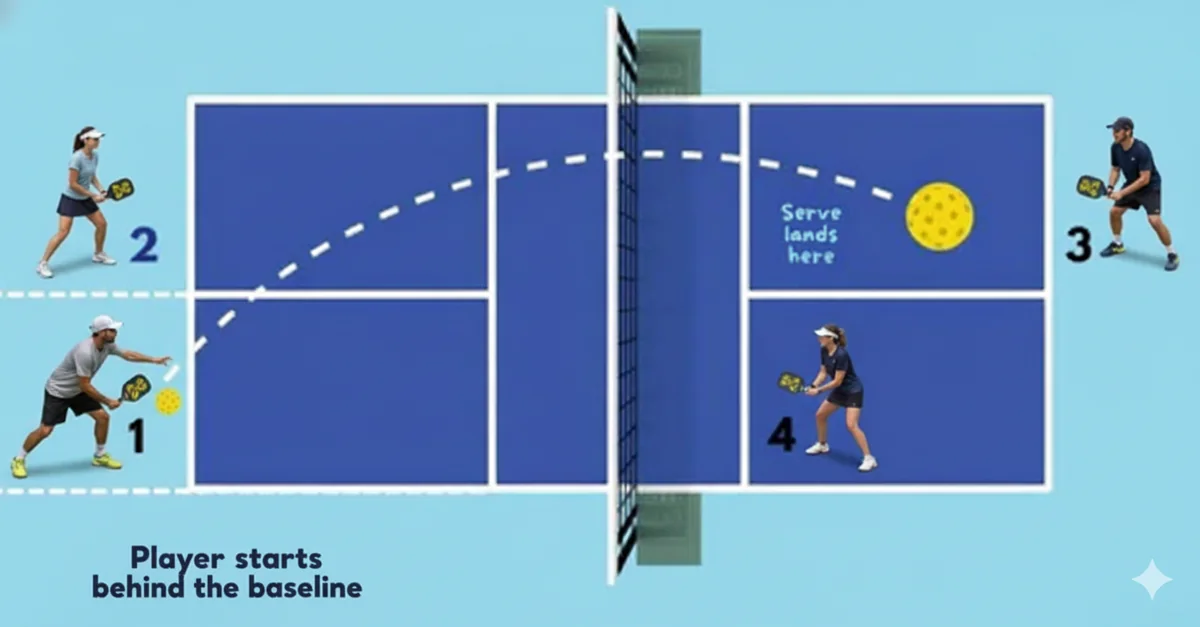Mastering the Serve: A Complete Guide to Pickleball Serving Rules

The serve is the single most important shot in pickleball—it's how every single point begins. But if you're new to the game, the specifics of pickleball serving rules can feel a bit confusing. Is it overhand or underhand? Where do I stand? What's a 'drop serve'?
Don't worry. This guide will break down everything you need to know about the rules for serving in pickleball. We'll cover the two legal serve types, common faults to avoid, and where your serve needs to land to be 'in', making you a confident server in no time.
What are the Basic Pickleball Serving Rules?
In pickleball, you must serve underhand from behind the baseline, hitting the ball diagonally into the opponent's service court. The serve must clear the non-volley zone (kitchen). You can either hit the ball out of the air (Volley Serve) or after bouncing it (Drop Serve). Your feet cannot touch the baseline or court until after you make contact with the ball.
In This Guide
Serving Fundamentals: Starting the Point Correctly
Before we dive into the different types of serves, let's cover the foundational rules that apply to every serve.
- Server's Position: You must stand with both feet behind the baseline and within the imaginary extensions of the centerline and sideline.
- Serving Diagonally: The serve must travel cross-court and land in the service court diagonal from your position.
- One Serve Attempt: Unlike tennis, you only get one attempt to hit a legal serve. If your serve is a fault, you lose the rally.
- Calling the Score: The server must clearly call the three-part score (your score - opponent's score - server number) before starting the serving motion.

When starting a game (at 0-0-2), the first server stands in the right-hand service area (the 'even' side) and serves diagonally.
The 2 Legal Pickleball Serves: Volley vs. Drop
As of 2023, there are two types of legal serves you can use in pickleball: the Volley Serve and the Drop Serve. You can use either one at any time. Let's break down the pickleball service rules for each.
1. The Volley Serve: The Traditional Method
The volley serve is the classic pickleball serve where you hit the ball out of the air without it bouncing. To be legal, a volley serve must follow three key rules:
- The arm must be moving in an upward arc at the time of contact.
- The paddle head must be below your wrist at the point of contact.
- Contact with the ball must be made below your waist (your navel level).
Think of it as a bowling motion—low to high. This ensures no one is hitting a powerful, tennis-style overhead serve.

The volley serve requires an underhand, upward swinging motion.
2. The Drop Serve: The Simpler Option
The drop serve is a newer, easier alternative. For a drop serve, you simply drop the ball from any height and hit it after it bounces one time.
The key benefit? The restrictive rules of the volley serve (upward arc, paddle below wrist, contact below waist) do not apply to the drop serve. You can hit the ball however you like after it bounces. This makes it a fantastic, reliable option for beginners.
For a deep dive into the specific rules and strategy, see our complete guide to the Pickleball Drop Serve Rules.

With a drop serve, you simply let the ball bounce once before striking it.
Service Faults: Common Mistakes to Avoid
A service fault results in an immediate loss of the rally. Here are the most common mistakes that violate pickleball serving rules.
Foot Faults
A foot fault occurs if, during your serving motion, either of your feet touch the baseline or step inside the court before you have made contact with the ball. Always start and finish your serve with both feet planted firmly behind the baseline.
Serving into the Kitchen
The serve must clear the Non-Volley Zone (also known as the kitchen). If the ball lands on the Non-Volley Zone line on the serve, it is a fault.
Illegal Motion
For a volley serve, hitting the ball with a side-arm or downward motion is illegal. Similarly, making contact above your waist or with the paddle head above your wrist are common faults. The drop serve is a great way to avoid these motion faults entirely.
Where Must the Serve Land?
A legal serve must land in the service court that is diagonally opposite from where the server is standing.
- It must land beyond the non-volley zone line.
- It must land within the centerline, sideline, and baseline.
If the ball touches any line of the correct service court (except the non-volley zone line), it is considered 'in'.

No matter which side you serve from, the serve must always travel diagonally to the opponent's service court.
Frequently Asked Questions about Pickleball Serving
Can the serve hit the net in pickleball?
Yes. If the serve hits the net and then lands in the correct service court, it is a live ball and is played. This is called a 'let' serve. Unlike in tennis, there are no re-dos for let serves in pickleball.
What is the drop serve rule in pickleball?
The drop serve rule allows you to drop the ball and hit it after it bounces. You can drop it from any height, but you cannot throw it or propel it downward. After the bounce, you can hit it any way you want (e.g., forehand, backhand, overhand), which makes it a very flexible and easy serve for beginners.
What happens if I serve from the wrong side of the court?
If you serve from the wrong side, you continue to play out the rally. The fault is only called after the rally is over. If you won the rally, the point is replayed from the correct position. If you lost the rally, your opponents keep the point.